About RoboSub Research
Robosub Development and Research
Conquers the Surface by Perceiving Objects Around Him, Maneuvers Around Obstacles, Resists Weather Disturbances, and has Waypoint Navigation.

The purpose of the submarine is to compete in the RoboSub competition. The mechanical area is responsible for designing, manufacturing and assembling the submarine to have a testing platform and later for competitions. In this report we will document the parts of the submarine so that anyone can understand how it works.
Localization and control
texto de localizacion y control
Manufacture
The submarine manufactured by VantTec's mechanical team has dimensions of 60cm long by 60cm wide and 40cm high. The submarine is designed so that its density is similar to that of water, in this way the submarine will be neutrally buoyant, that is, it does not float or sink. The prototype completed in December 2023 has an approximate weight of 20 kilograms and a volume of 17,000 cubic centimeters, therefore it sinks but is correctable.
Skeleton
The skeleton of the submarine is based on 4 sills that are the column of the submarine. 4 ribs are attached to the soles. The ribs are what support the accessories such as mounts and enclosures. The submarine has 6 mounts of where the motors and 3 enclosures are positioned, 2 for the batteries and 1 for the electronics. Additionally, a torpedo tube and a claw will be added to the submarine. This is so that they can perform different underwater tasks.
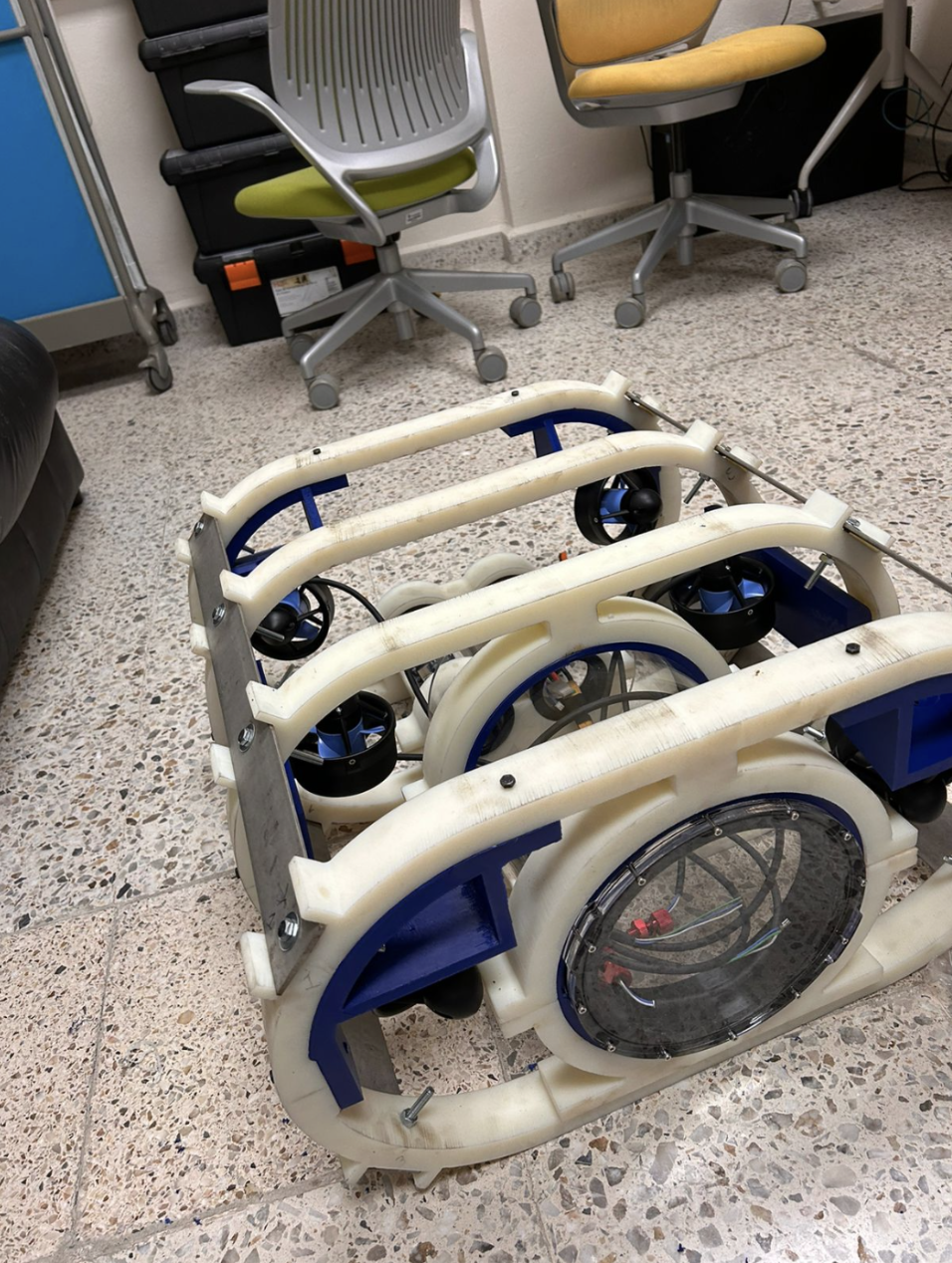

Sills
As described above the sills are the backbone of the submarine. The submarine has 4 sills positioned at each corner of the ribs. The current slabs are stainless steel rectangles 60cm long by 5cm wide and 0.3cm high. They have 4 holes where a screw joins the rib to the sill.
In the future it is planned to change the sills to reduce the density of the submarine. Additionally, stainless steel was very difficult to manipulate due to its hardness. The intended metal is aluminum.

Ribs
The submarine has 4 ribs. These are divided into 2 enclosure ribs and 2 battery ribs. The general shape is identical, what changes is the way they hold the enclosures. The ribs are approximately 60cm wide by 40cm high and 4cm long. They are made of a material called nylamid, this material is similar to acrylic but more resistant and rigid. The ribs were cut from larger plates in a process called jet cutting. This cut uses water at high speeds to cut the material.
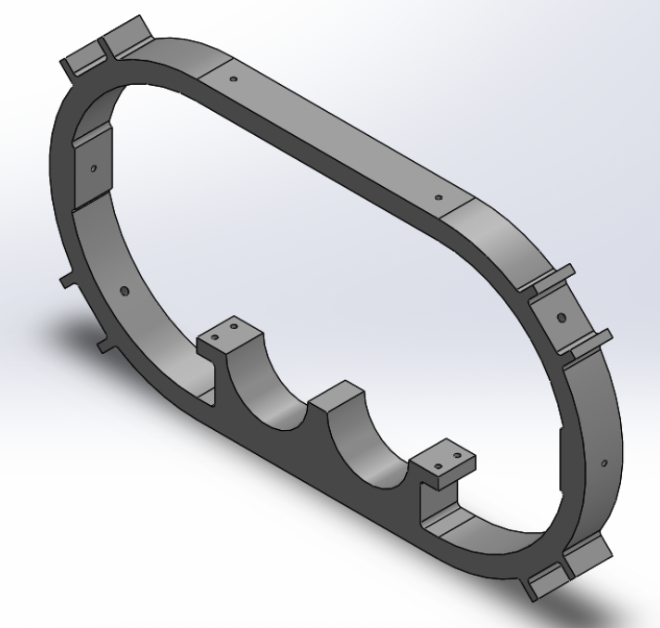
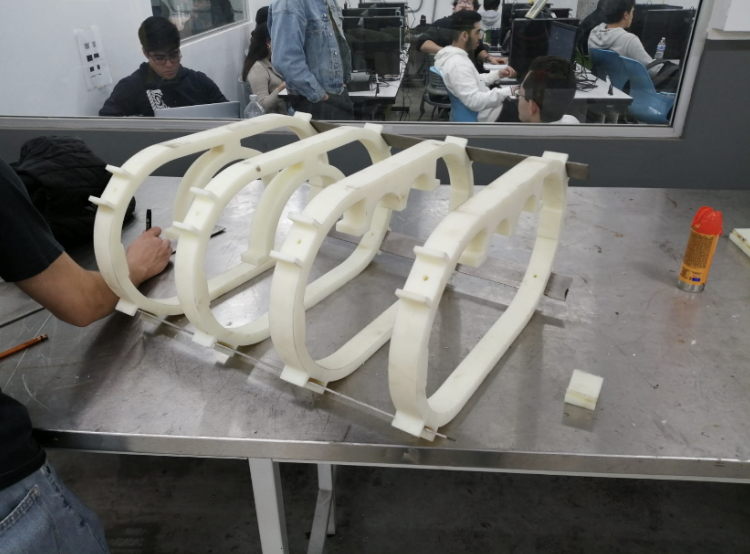
The next step after cutting the ribs was to make the holes for the screws to go through. They were made in two sizes, 7 millimeters for the screws that hold the sills and 5 millimeters for the rest. This was decided because the slabs are structural and support more weight. A drill was used to make the holes and they were made by hand due to the large size of the piece.
Mounts
As the name indicates, the mounts are the parts where the engines are mounted. The submarine has 6 mounts, 4 in each corner and 2 in the center. These were 3D printed due to their complex geometry. The material chosen was PETG due to its water resistance and water-like density.

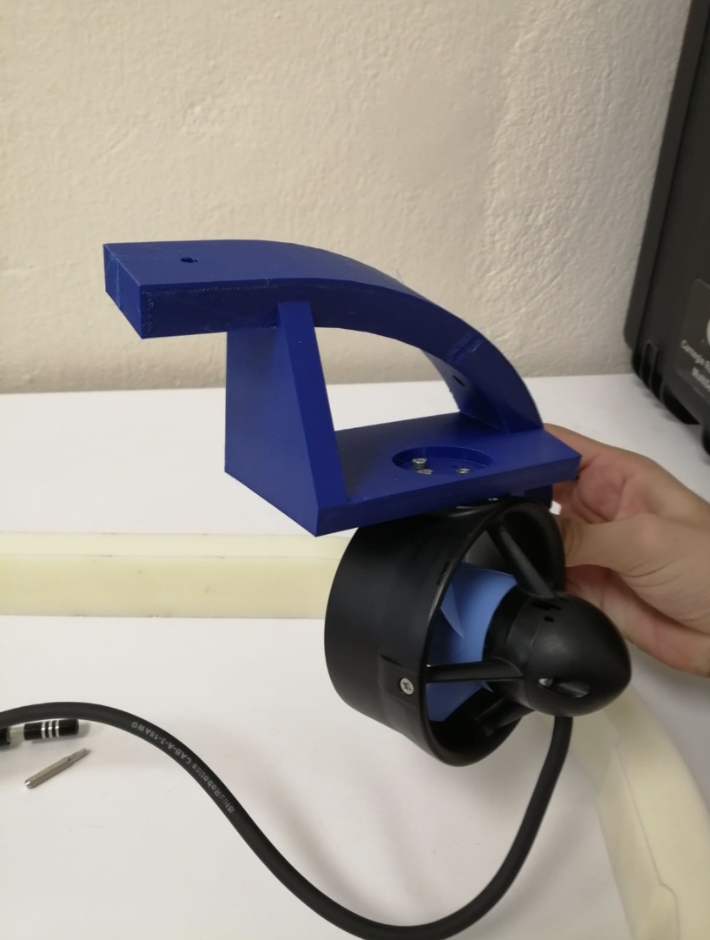
Vision and projects
Computer Vision
Navigating the underwater world poses unique challenges for the computer vision field due to the complex and dynamic nature of aquatic environments. Underwater Image degradation, reflection and refraction effects (figure 1), absorption and scattering effects of wavelengths (figure 2), underwater camera calibration, among others, make the development of robust object detection systems a formidable task. As we strive to overcome the complexities of underwater vision, we delve into the frontiers of scientific inquiry, implementing cutting-edge technology such as machine learning (ML) algorithms.
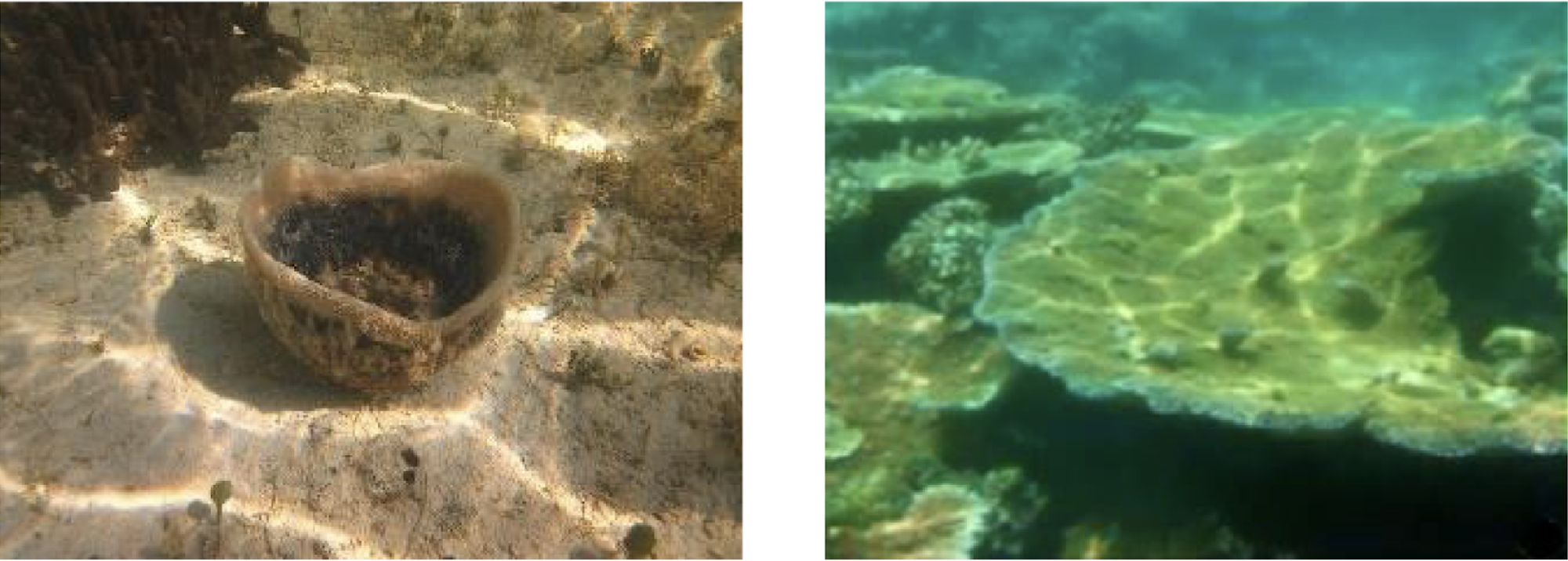
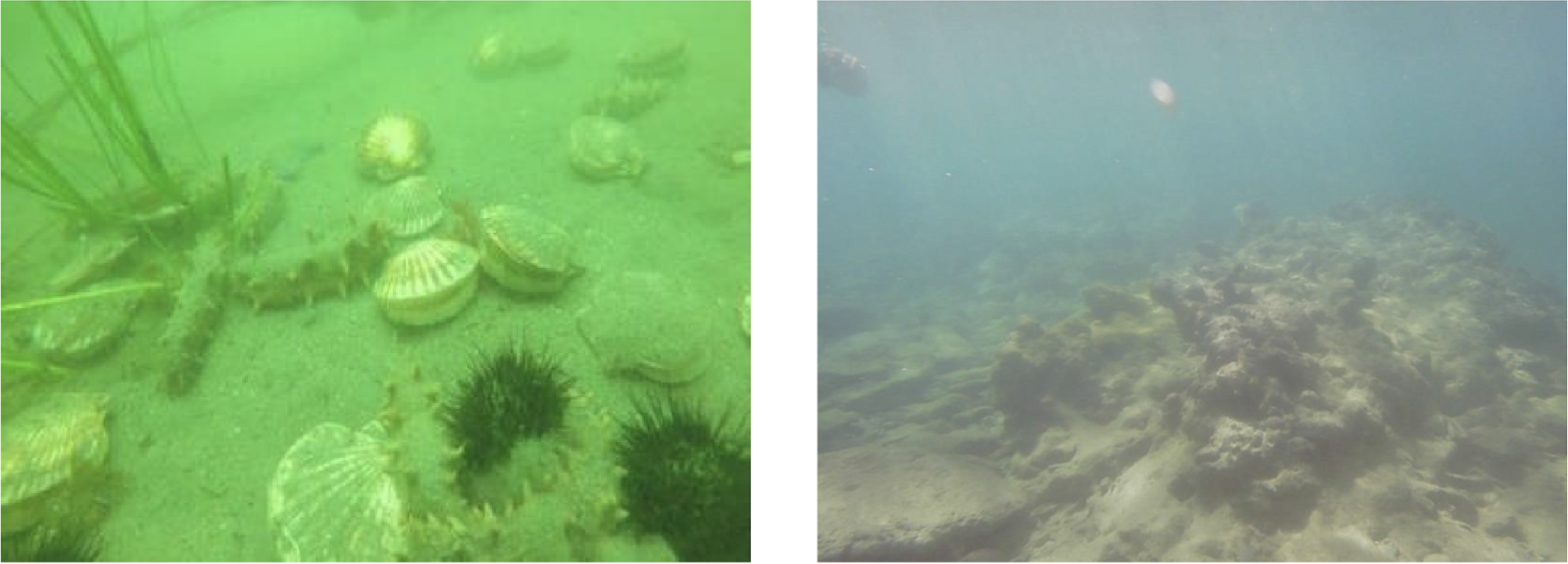
Embarking on the integration of Detection Transformers (DETR) into our robotic autonomous submarine represents a profound leap forward in the realm of ML algorithms. This initiative signifies the pioneering adoption of DETR over You Only Look Once (YOLO) algorithms, positioning our project as a trailblazer within the team. This strategic shift places our robotic submarine project at the forefront of scientific innovation, where we leverage state-of-the-art ML algorithms to navigate the complexities of underwater environments.
Project
Isaac Sim marks a pivotal and exciting chapter in our pursuit of autonomous underwater exploration. The decision to utilize this simulator highlights our commitment to employing cutting-edge tools for testing and refining our autonomous vehicle. Prototyping using a realistic simulator reduces the time bridge towards implementation by making possible quick changes analysis. Topics being worked within the simulator are synthetic data generation for object detection using water particles-based simulation, sonar simulation for localization purposes, testing of navigation algorithms, among others.
In navigating this delicate balance between simulation and reality, our team embraces the challenges, viewing them as opportunities to pioneer advancements in underwater robotics and artificial intelligence. The prospect of achieving groundbreaking results through this synergy of simulation and practicality fuels our collective determination to push the boundaries of what is achievable in the exploration of the ocean's depths.